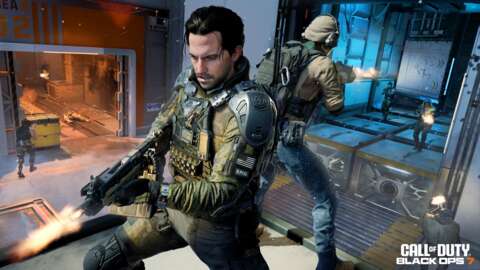
Games based on Dungeons & Dragons aren’t anything new, but it’s no secret that Larian Studios’ Baldur’s Gate 3 did a lot to popularize video games in which you roll dice. In the wake of Baldur’s Gate 3, Wizard of the Coast invested $1 billion into its gaming ecosystem, partnering with several different developers to create their own takes on D&D, such as Tactical Adventures’ very D&D Fifth Edition-coded Solasta II and an unnamed, single-player D&D game from Star Wars Jedi director Stig Asmussen’s new studio. Unless WotC does a mass cancellation (like the five D&D games canned just prior to the release of Baldur’s Gate 3), we can expect quite a few D&D games over the next several years.
The next one is slated for this year: Demeo x Dungeons & Dragons: Battlemarked, a mouthful of a title for a fun four-player co-op game. If Baldur’s Gate 3 is for folks who want something on par with the mechanical crunch of D&D Fifth Edition, then Battlemarked feels like the ideal choice for those who want something more approachable–a game to play with kids too young for something like Baldur’s Gate 3, or other adults too busy to devote hours to a hobby as time-consuming as D&D.
GameSpot got an exclusive first look at Battlemarked, playing through two early levels alongside game director Gustav Stenmark and PR director Jamie Camargo. While I played as a Tiefling Rogue, Camargo played as an Elf Ranger, and Stenmark controlled two characters: a Dragonborn Paladin and Gnome Wizard. The first level we played through was a simple encounter between the party of heroic adventurers and a band of attacking goblins, while the second was the first floor of a multi-leveled dungeon crawl.
Battlemarked is set in the Forgotten Realms, the same setting as Baldur’s Gate 3 and the recent Honor Among Thieves movie, making Battlemarked a great way to revisit familiar locations and characters that may have grown stale over repeat playthroughs or watches. There seems to be a concerted effort to build on this setting, rather than branch off into Eberron, Krynn, or something homebrewed. I’m still hoping we get a game that goes to Eberron one day, but I did like how easy it was to familiarize myself with what’s going on in Battlemarked’s story, who the bad guys in a fight are, and how certain non-player characters might react to specific dialogue choices. The familiar setting feeds into Battlemarked’s approachable nature, speaking “the same language” as the most popular framework through which stories in D&D have been told.

But it’s the gameplay, not the narrative details, that had me begging Stenmark and Camargo to play past my allotted preview session. In Battlemarked, most missions focus on combat. It’s turn-based, with each player taking a turn before the enemy creatures then all simultaneously go. Each class has a deck of 10 cards that they bring into battle, and draw from each turn, and every player gets two Actions per turn. Each card has an Action cost ranging from 0 to two, and movement, melee attacks, and interacting with the environment each take one Action.
I love this structure. I’ve long disliked how D&D’s combat–which largely separates everything into an Action, Bonus Action, Free Action, and Movement–can make things difficult for new players to grasp. Why is this one spell an Action, while this other one is a Bonus Action, and this one specific feature that this one class has that’s like magic is a Free Action? Balance, mainly. But there’s no easy rule of thumb as to why some stuff is an Action and some stuff is a Bonus Action. You just have to know. That means memorization. And that takes time.

Lots of other tabletop systems (Pathfinder most notably) have adopted a structure like what Battlemarked has, where everything is just an Action, and each player has the same number of Actions per turn. This is much easier to understand, but Battlemarked maintains D&D’s strategic elements and teamplay by relying on cards. With 10 cards in the deck, you’ll understand what your class can do fairly quickly but you only ever have about five or six cards in your hand at a time (occasionally, a player might find a potion or two in the environment, which appears as an extra card in your hand until used), so you have to plan in the moment with what cards you have and attempt to plan for what’s to come based on what card you might draw on your next turn.
The Rogue has a card that lets them turn invisible for three turns, letting them land a more lethal melee attack from anywhere–not just a backstab. Once you attack, the invisibility ends early. This card is a great way to escape from a sticky situation, but I preferred saving it because if I drew a card called Knock Out, I could perform the Rogue’s unique melee strike that stunned an enemy, leaving them open for the Paladin’s devastating Smite or Wizard’s explosive Fireball. Best part: Knock Out has the unique effect of not breaking invisibility.

A few other cards have a similar level of synergy. The Dragonborn’s poison breath could coat enemies and the ground in deadly fumes that could be ignited for further damage by the Wizard’s fiery spells, and the Ranger’s assortment of trick arrows could bunch up enemies to leave them susceptible to the Rogue’s assortment of bombs. And this was just the demo, with everyone running with an unchanging deck of 10 cards. The full game lets you unlock new abilities and customize your deck, curating the ideal playstyle for your chosen class. There’s a nice level of depth to Battlemarked’s combat despite how easy it is to pick up.
The one aspect of the game I’m still unsure of is the narrative, simply because the demo I played didn’t feature much of it. Like D&D, your character has ability scores that provide bonuses to skills like Persuasion and Arcana, and when speaking to non-player characters, you can attempt a roll of the dice with these skills to try to glean additional information or convince others to do as you please. During the demo, Stenmark convinced a noble of our friendly nature so that he would trust us, for example, while I failed at identifying a strange mushroom and chose to just eat it (it was deeply poisonous, so lesson learned), and we both couldn’t manage to convince a group of deadly myconids that we came in peace, leading to an amusing battle.

On first glance, there doesn’t seem to be as much narrative depth in Battlemarked as what’s been seen in other dice-based RPGs, like Baldur’s Gate 3 or Citizen Sleeper 2: Starward Vector. But the outcomes of the few choices our group made were rewarding each time–either because we got what we wanted, or we failed, but the outcome of failure was written to be hilarious or at least not so devastating that it demanded we restart the current encounter. It seems like the dialogue choices and more story-driven elements will provide sufficient enjoyment, but the best part of the game is clearly the card-based, D&D-inspired combat.
Demeo x Dungeons & Dragons: Battlemarked is launching for PC, PS5, and Meta Quest on November 20.
- Security Camera Installation – indoor/outdoor IP CCTV systems & video analytics
- Access Control Installation – key card, fob, biometric & cloud‑based door entry
- Business Security Systems – integrated alarms, surveillance & access control
- Structured Cabling Services – voice, data & fiber infrastructure for new or existing builds
- Video Monitoring Services – 24/7 remote surveillance and analytics monitoring
Author: 360 Technology Group





















